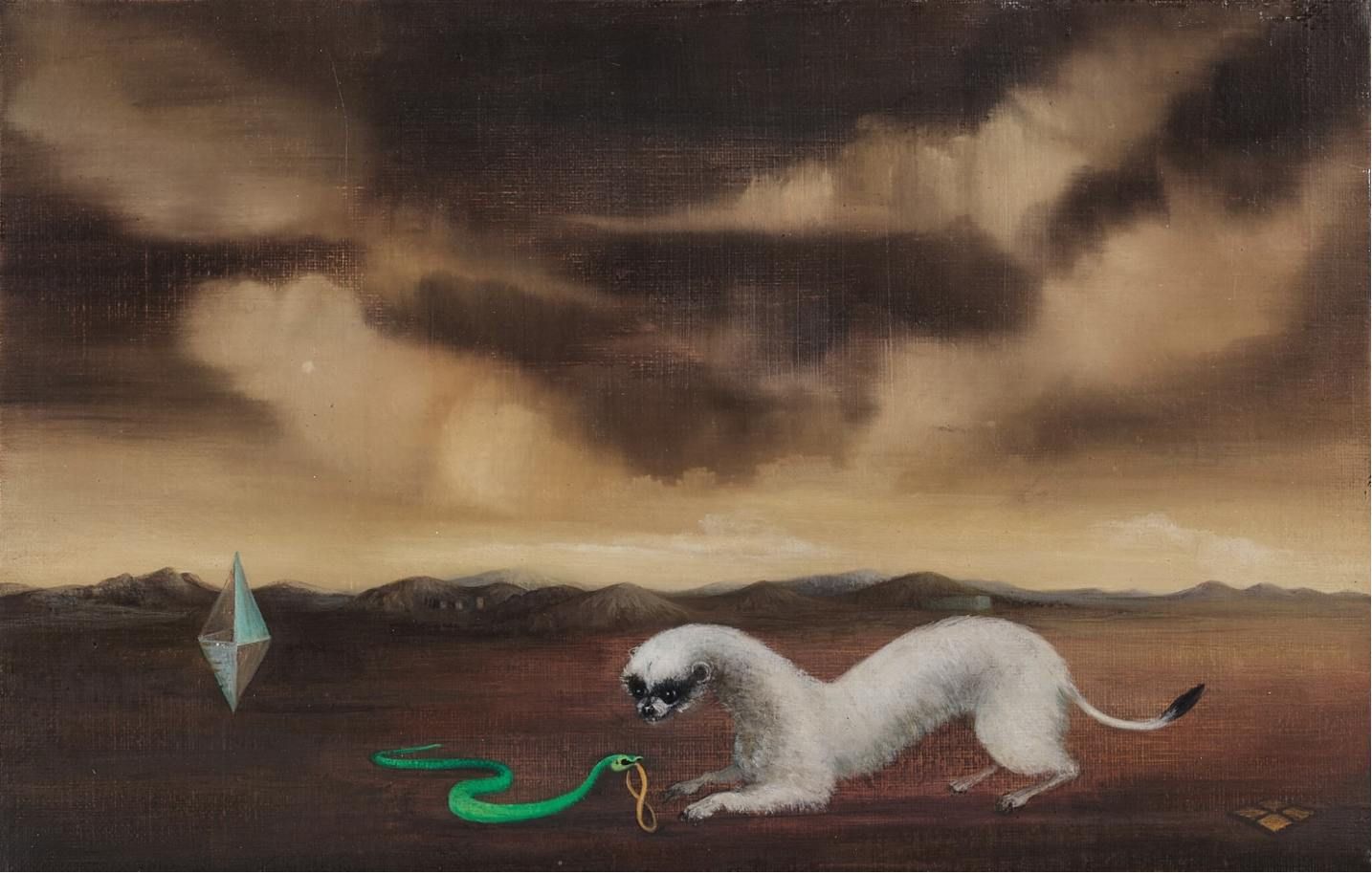Bridget Bate Tichenor
Diplomáticos Paris en Eden (El cara blanca)
In 1924, André Breton (1896–1966, French writer and poet, the co-founder, leader, and principal theorist of Surrealism) published his Manifeste du surréalisme, a text that announced the birth of an artistic movement known as Surrealism. The aim, wrote Breton, was ‘to resolve the previously contradictory conditions of dream and reality into an absolute reality, a super-reality.’ In this pursuit, Surrealists explored the unconscious mind, dreams and irrational thought, offering insight into real life through the imagined.
With the advent of World War II, many European artists, including Surrealists, sought refuge across the Atlantic. Some settled in New York, while others made their way to Mexico. In the colourful and vibrant surroundings of Central America, émigrés mingled with local artists, leading the movement to broaden and diversify. As part of a group of European female artists, including Remedios Varo (1908–1963, Spanish and Mexican surrealist painter), Alice Rahon (1904-1987, French-born Mexican poet and artist whose work contributed to the beginning of abstract expressionism in Mexico) and Leonora Carrington OBE (1917–2011, British-born, naturalised Mexican surrealist painter and novelist who spent most of her adult life in Mexico City and was one of the last surviving participants in the Surrealist movement of the 1930s), who migrated to Mexico City in the 1940s and 1950s, Bate Tichenor developed an ethereal, deeply personal style influenced by her new cultural surroundings.
Bate Tichenor engaged with Surrealist themes through the unique lens of magical realism (art that presents a realistic view of the world while incorporating magical elements, often blurring the lines between speculation and reality), creating intricate worlds filled with impenetrable mystery and populated by symbolic figures or ‘guides’, as she called them, set in haunting, dreamlike landscapes. Some of her paintings, like Idealista (no. 3) (undated, oil on plaster and masonite, 30.5 x 40 cm), Untitled (Conferencia) (undated, oil on plaster and masonite, 34.2 x 45.7 cm) and Misioneros (1965, oil on plaster and masonite, 40 x 40 cm), characterised by mysterious monster-like figures, bring to mind earlier works by the legendary Hieronymus Bosch (c. 1450–1516, Dutch painter and one of the most notable representatives of the Early Netherlandish painting school whose work, widely copied and collected over the centuries, generally concerned itself with fantastic and macabre depictions of religious concepts and narratives).
Stylistically and technically, her work is composed of an original mixture of techniques originating in the Renaissance. Bate Tichenor’s painting technique was based upon 16th-century Italian tempera formulas that artist Paul Cadmus (1904–1999, American artist widely known for his egg tempera paintings of gritty social interactions in urban settings, combining elements of gay eroticism and social critique in a style often called magic realism) taught her whilst she was a student at the Art Students League of New York in 1943-1945. Bate Tichenor would prepare an eggshell-finished gesso ground (having invented her own mixture of burnished plaster) on masonite board and apply (instead of tempera) multiple transparent oil glazes defined through chiaroscuro with sometimes one hair of a #00 sable brush, helping her achieve the almost microscopic details that most of her paintings display.
Bate Tichenor considered her work to be of a spiritual nature, reflecting ancient occult religions, magic, alchemy, and Mesoamerican mythology in her Italian Renaissance style of painting that merged the natural with the supernatural. These aspects and qualities were touched upon by the catalogue entry for Diplomáticos Paris en Eden (El cara blanca) when Firestorm Foundation acquired the work at Sotheby’s, New York, Modern Day Auction, in November 2024:
Drawing inspiration from the liminal dreamscapes of her mentor, Giorgio de Chirico, Tichenor refined her technique with 16th-century Italian egg tempera formulas to produce meticulously polished paintings. The present work showcases her surreal vision, where natural elements, symbolic forms, and mystical hybrid creatures blend seamlessly. These visual elements bridge the natural and supernatural, resulting in a scene that feels both familiar and strange. The figures hold still, meditative postures, yet seem engaged in a dialogue beyond human comprehension. Her animals, often symbolic of spirits, guardians, or mystical beings, reflect indigenous lore and esoteric traditions, exuding a serene yet otherworldly aura as though they inhabit a parallel realm of dreams and myths.
Signed (lower right) with the artist’s monogram.
Provenance
Private collection (acquired directly from the artist).
Morton Subastas, Subasta de Arte Latinoamericano, Mexico City, 25 May 2023, lot 94.
Private collection (acquired at the above sale).
Sotheby’s, New York, Modern Day Auction, 19 November 2024, lot 509.
Firestorm Foundation (acquired at the above sale).
Miscellaneous
The authenticity of this work has been verified (ahead of its 2023 sale at Morton Subastas, Mexico City) by José Valtierra, curator of the exhibition Bridget Tichenor at the Museum of Mexico City in 2012.
Copyright Firestorm Foundation
